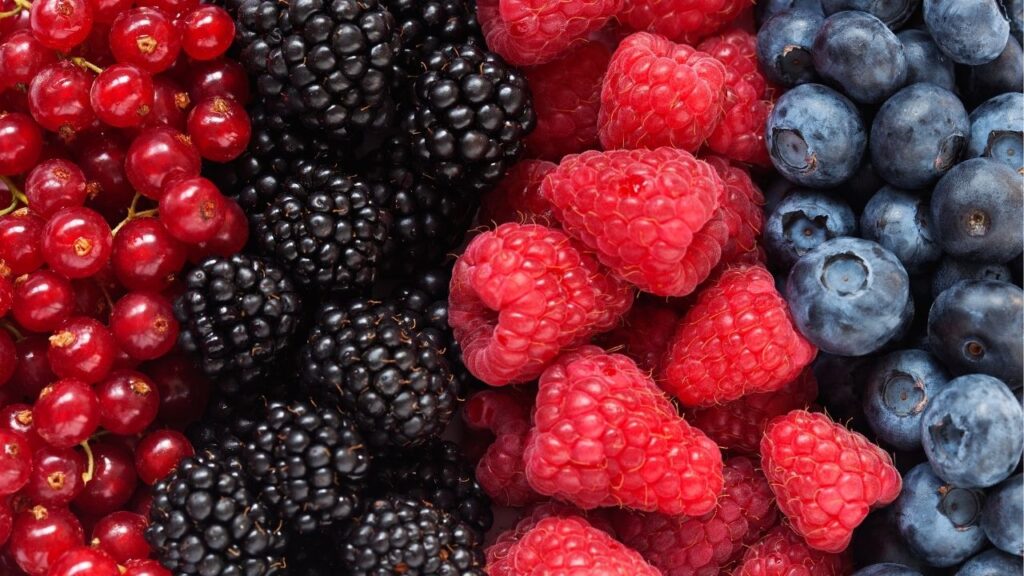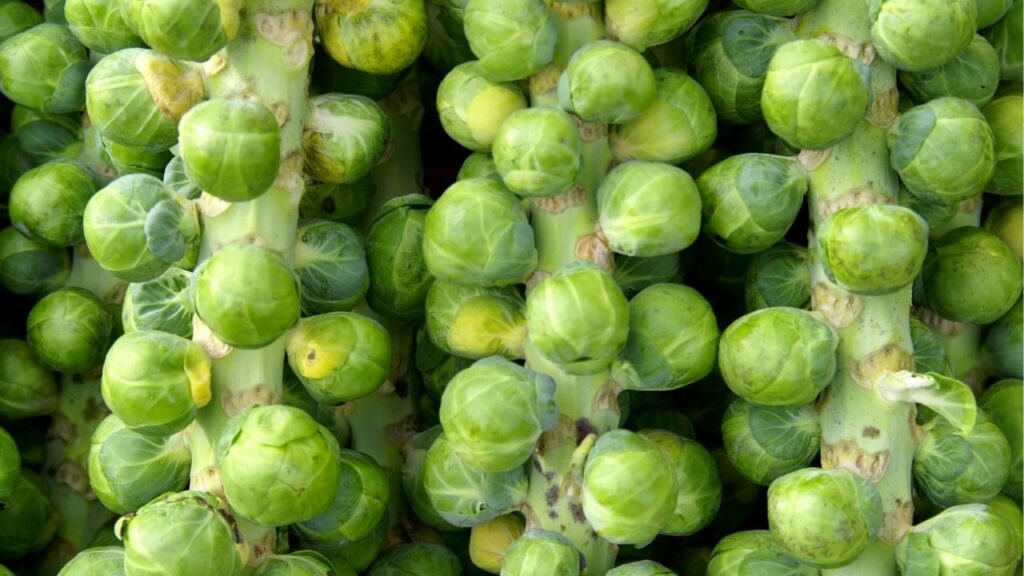Bell peppers are packed full of health benefits. They are actually a fruit, although many think of them as a vegetable. They are safe to feed your dog and contain many vitamins and antioxidants.
Key Takeaways
- A small dog can eat ¼ of a bell pepper and a large dog can eat half a bell pepper.
- Dogs can eat bell peppers raw.
- The benefits of bell peppers for dogs include numerous vitamins and minerals, antioxidants, and some anticancer properties.
Bell Peppers for Dogs: Really?
You bet you can feed your dog bell peppers. In fact, veterinarians specifically recommend bell peppers for dogs with cancer for good reasons, which we will go over below.
The Details of Bell Peppers
The scientific name of bell peppers is Capsicum annuum and they are from the nightshade family of plants.1
Botanists consider bell peppers to be a fruit while a chef or nutritionist will consider them to be a vegetable.
Bell peppers are commonly found in grocery stores and farmer markets. Depending on climate, they can be grown in a home garden.
They have a crunch with a firm outside and seeds inside. Bell peppers that are green or white are unripe, but they are still edible with a taste that is less sweet. Yellow, red, and orange bell peppers are ripe.
Bell peppers can be eaten in many ways including raw, roasted, sautéed, grilled, pureed, pickled, or added as powder to food.
Benefits of Bell Peppers for Dogs
Bell peppers have many nutritional benefits for both you and your dog.
Red and yellow bell peppers overall have the most health benefits compared to other colors of bell peppers.1 They contain many vitamins and minerals including:2
- vitamin C
- vitamin E
- vitamin A
- vitamin B6
- vitamin B9 (folate)
- vitamin K1
- potassium
These vitamins and minerals found in bell peppers have many health benefits. In a study with mice, vitamin C has been shown to decrease the development of skin tumors. Dietary potassium has been shown to decrease blood pressure and development of cardiovascular disease.4
Other compounds with health benefits found in bell peppers are the carotenoids lutein and zeaxanthin, which have a role in eye health.10 Bell peppers also have antibacterial properties which can be helpful for immune system function.1
Bell Peppers and Cancer
Several of the vitamins found in bell peppers may have an effect on cancer.
Vitamins E6 and A7 have been shown to have anticancer properties. In addition to its anticancer properties, vitamin E also has anti-inflammatory properties.6 Vitamin A has been shown to decrease free radicals that can damage DNA.7
There is debate on how folate affects cancer, with some studies showing it helps with cancer types such as breast cancer and other studies showing that it may increase the risk of prostate cancer.5
Bell peppers also contain carotenoids and phenols which are suggested to help with cancer prevention. These compounds act as antioxidants and include capsanthin, quercetin, and luteolin.1
Capsanthin is a carotenoid that causes the red pigment color of red bell peppers and also has anti-tumor activity, especially in the colon.8 Luteolin is a phenol with anticancer and anti-inflammatory properties.9
When to Not Feed Bell Peppers to Dogs
Allergic reactions to bell peppers are rare, but if your dog has an allergy to Birch Pollen or Mugwort, there is an increased risk of allergic reactions to peppers.11,12 Overeating bell peppers may cause gastrointestinal upset.
There are no known medication interactions for bell peppers. There are medication reactions with peppers that contain capsaicin (hot peppers), but bell peppers do not contain capsaicin.
How to Prepare Bell Peppers for Dogs
Prepare bell peppers by washing and drying them. To cut them and remove the seeds, the sides can be cut off first keeping the top intact.
They can be cooked in a variety of methods. To boil peppers, cook in a covered pot with a small amount of salt water for about 6-7 minutes.
To sauté, heat in a skillet with 2-3 tablespoons of cooking oil (preferably coconut oil) until tender, about 10 minutes.
Animals tend to need bell peppers finely chopped or pureed to absorb nutrients. A small dog can eat about one quarter of a bell pepper and a large dog can eat half a bell pepper. There is also a powder available that can be put into food.
Where to Get Bell Peppers for Dogs
There are several sources of bell peppers available. After harvesting and processing, antioxidant levels can decrease in vegetables,13 but levels in frozen vegetables are comparable to fresh.14
Organic vegetables are generally healthier as they are grown using less pesticides and have a higher concentration of nutritionally valuable bioactive compounds.15 Organic peppers have higher levels of vitamin C, carotenoids, and phenols resulting in higher antioxidant levels than non-organic peppers.16
Organic bell peppers are also available pickled, and these are also higher in bioactive compounds compared to non-organic peppers.17 Pickled vegetables often contain sodium, garlic, or onion so these are not the best choice for dogs.
Red pepper powder is also available, and is a way to increase phenol, antioxidant, and carotenoid levels in foods.18
Certain shipping and farming techniques play a role in the nutritional value of many foods, including bell peppers. Companies that heat pepper for 1-3 minutes prior to shipping maintain the quality and amount of many beneficial properties in bell peppers.19
The highest antioxidant levels were found in peppers harvested in September (20), but this is dependent on geographic location.
Bell peppers can be stored for up to three weeks without negatively affecting their beneficial properties.21 Mini bell peppers seem to also have strong nutritional benefits, but more studies are needed to confirm.22
Bottom Line on Bell Peppers for Dogs
Giving your dog a small amount of bell pepper is a good snack full of health benefits. Any additional snacks or food additives should not make up more than 10% of your dog’s diet.
Be sure to start with a small amount of any new food, including bell pepper, to make sure it does not cause gastrointestinal upset for your dog. Generally, a small dog can have up to a quarter of a bell pepper and a large dog half.
- Hu X, Saravanakumar K, Jin T, Wang MH. Effects of yellow and red bell pepper (paprika) extracts on pathogenic microorganisms, cancerous cells and inhibition of survivin. J Food Sci Technol. 2021;58(4):1499-1510. doi:10.1007/s13197-020-04663-4
- Batiha GE, Alqahtani A, Ojo OA, et al. Biological Properties, Bioactive Constituents, and Pharmacokinetics of Some Capsicum spp. and Capsaicinoids. Int J Mol Sci. 2020;21(15):5179. Published 2020 Jul 22. doi:10.3390/ijms21155179
- Mathews-Roth MM. Antitumor activity of beta-carotene, canthaxanthin and phytoene. Oncology. 1982;39(1):33-37. doi:10.1159/000225601
- Whelton PK, He J. Health effects of sodium and potassium in humans. Curr Opin Lipidol. 2014;25(1):75-79. doi:10.1097/MOL.0000000000000033
- Pieroth R, Paver S, Day S, Lammersfeld C. Folate and Its Impact on Cancer Risk. Curr Nutr Rep. 2018;7(3):70-84. doi:10.1007/s13668-018-0237-y
- Jiang Q. Natural forms of vitamin E: metabolism, antioxidant, and anti-inflammatory activities and their role in disease prevention and therapy. Free Radic Biol Med. 2014;72:76-90. doi:10.1016/j.freeradbiomed.2014.03.035
- Dawson MI. The importance of vitamin A in nutrition. Curr Pharm Des. 2000;6(3):311-325. doi:10.2174/1381612003401190
- Kim S, Ha T, Kyeong Hwang I. Analysis, Bioavailability, and Potential Healthy Effects of Capsanthin, Natural Red Pigment from Capsicum spp. Food Reviews International. 2009:25(3):198-213
- Seelinger G, Merfort I, Schempp CM. Anti-oxidant, anti-inflammatory and anti-allergic activities of luteolin. Planta Med. 2008;74(14):1667-1677. doi:10.1055/s-0028-1088314
- Abdel-Aal E, Akhtar H, Ali R. Dietary sources of lutein and zeaxanthin carotenoids and their role in eye health. Nutrients. 2013 Apr 9;5(4):1169-85
- Jensen-Jarolim E, Santner B, Leitner A, et al. Bell peppers (Capsicum annuum) express allergens (profilin, pathogenesis-related protein P23 and Bet v 1) depending on the horticultural strain. Int Arch Allergy Immunol. 1998;116(2):103-109. doi:10.1159/000023932
- Leitner A, Jensen-Jarolim E, Grimm R, et al. Allergens in pepper and paprika. Immunologic investigation of the celery-birch-mugwort-spice syndrome. Allergy. 1998;53(1):36-41. doi:10.1111/j.1398-9995.1998.tb03771.x
- Villa-Rodriguez JA, Palafox-Carlos H, Yahia EM, Ayala-Zavala JF, Gonzalez-Aguilar GA. Maintaining antioxidant potential of fresh fruits and vegetables after harvest. Crit Rev Food Sci Nutr. 2015;55(6):806-822. doi:10.1080/10408398.2012.685631
- Bouzari A, Holstege D, Barrett DM. Vitamin retention in eight fruits and vegetables: a comparison of refrigerated and frozen storage. J Agric Food Chem. 2015;63(3):957-962. doi:10.1021/jf5058793
- Hurtado-Barroso S, Tresserra-Rimbau A, Vallverdú-Queralt A, Lamuela-Raventós RM. Organic food and the impact on human health. Crit Rev Food Sci Nutr. 2019;59(4):704-714. doi:10.1080/10408398.2017.1394815
- Hallmann E, Rembiałkowska E. Characterisation of antioxidant compounds in sweet bell pepper (Capsicum annuum L.) under organic and conventional growing systems. J Sci Food Agric. 2012;92(12):2409-2415. doi:10.1002/jsfa.5624
- Hallmann E, Marszałek K, Lipowski J, et al. Polyphenols and carotenoids in pickled bell pepper from organic and conventional production. Food Chem. 2019;278:254-260. doi:10.1016/j.foodchem.2018.11.052
- Kaur R, Kaur K, Wagh RV, Kaur A, Aggarwal P. Red bell pepper (Capsicum annuum L.): Optimization of drying conditions and preparation of functional bread. J Food Sci. 2020;85(8):2340-2349. doi:10.1111/1750-3841.15317
- Gabriela LA, Gerardo LJ, Odín VM, et al. Antioxidant enzymatic changes in bell pepper fruit associated with chilling injury tolerance induced by hot water. J Food Biochem. 2021;45(11):e13966. doi:10.1111/jfbc.13966
- Chávez-Mendoza C, Sanchez E, Muñoz-Marquez E, Sida-Arreola JP, Flores-Cordova MA. Bioactive Compounds and Antioxidant Activity in Different Grafted Varieties of Bell Pepper. Antioxidants (Basel). 2015;4(2):427-446. Published 2015 Jun 23. doi:10.3390/antiox4020427
- Rodríguez-Rodríguez E, Sánchez-Prieto M, Olmedilla-Alonso B. Assessment of carotenoid concentrations in red peppers (Capsicum annuum) under domestic refrigeration for three weeks as determined by HPLC-DAD. Food Chem X. 2020;6:100092. Published 2020 May 28. doi:10.1016/j.fochx.2020.100092
- Cárdenas-Castro AP, Rochín-Medina JJ, Ramírez K, Tovar J, Sáyago-Ayerdi SG. In Vitro Intestinal Bioaccessibility and Colonic Biotransformation of Polyphenols from Mini Bell Peppers (Capsicum annuum L.). Plant Foods Hum Nutr. 2022;77(1):77-82. doi:10.1007/s11130-022-00948-5
Topics
Did You Find This Helpful? Share It with Your Pack!
Use the buttons to share what you learned on social media, download a PDF, print this out, or email it to your veterinarian.






